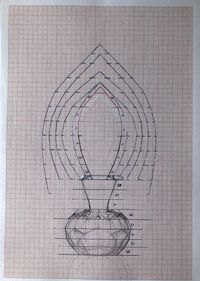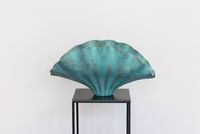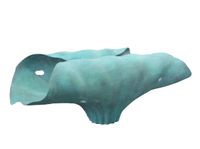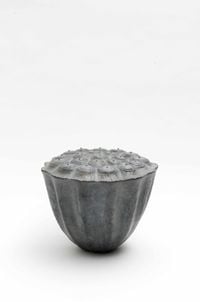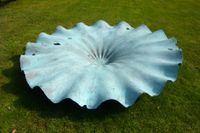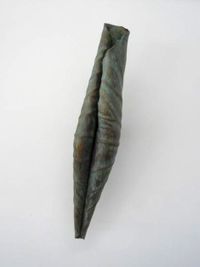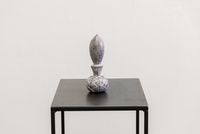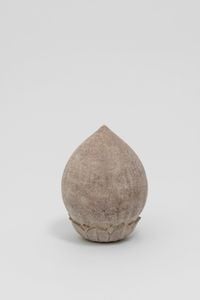Morio Nishimura learned this technique in Kamakura, a small coastal town southwest of Tokyo that served as the country's capital for centuries. It is known not only for its ancient temples and sanctuaries, but also for a special wood carving technique, the so-called 'Kamakura-bori'. He creates detailed technical drawings, which are calculated with a calculator and not with a computer. These not only provide fascinating insights into the process of creation, but also convey the profound sense of abstraction behind the finished works. The layered wooden segments of the first construction phase also point to an underlying abstraction.
Read MoreThe lotus leaf is a central motif in his bronze sculptures, as well as in his delicate works on handmade paper. Lotus leaves, blossoms, and seeds inspire its formal vocabulary. The lotus is a symbol of Buddhism in terms of content and form, which stands for the cycle of birth and death as well as for the transmigration of souls. But in other Asian religions too, the leaf represents elegance, purity, and grace. Nishimura is by no means interested in reproducing the lotus leaf as a purely decorative object, but enters into a spiritual semiotics. On the occasion of his large exhibition in the Museum of Modern Art Kamakura, he explained 'I carry the lotus inside me. It often seizes my thoughts as a memory. In an abstract sense, I am in an intense relationship with it and so it is a part of me'.
Morio Nishimura was born in 1961 in Kamakura, the small coastal town not far from Tokyo. After studying art at Tama Art University in Tokyo, he came to Germany on a DAAD scholarship in 1991 and continued his studies at the Kunstakademie Düsseldorf as a master student of Prof. Günther Uecker. At the same time, he also worked as a lecturer in the field of fine arts at the University of Mainz. In 2000/2001 Nishimura was artist in residence at the Kunststation St. Peter in Cologne. Nishimura lives and works in Düsseldorf. He has participated in numerous solo and group exhibitions in Germany and abroad, including at the Kunststation St. Peter (2002), at the Museum of Modern Art Kamakura and Hamaya (2005), at the Swiss Triennial of Sculpture - Bad RagARTz, Bad Ragatz and Vaduz (2009 and 2012), at the Mediation Biennale in Poznan/Poland (2012), and at Tamaguchi Fine Art Tokyo (2011/2013).
Text courtesy Beck & Eggeling International Fine Art.
